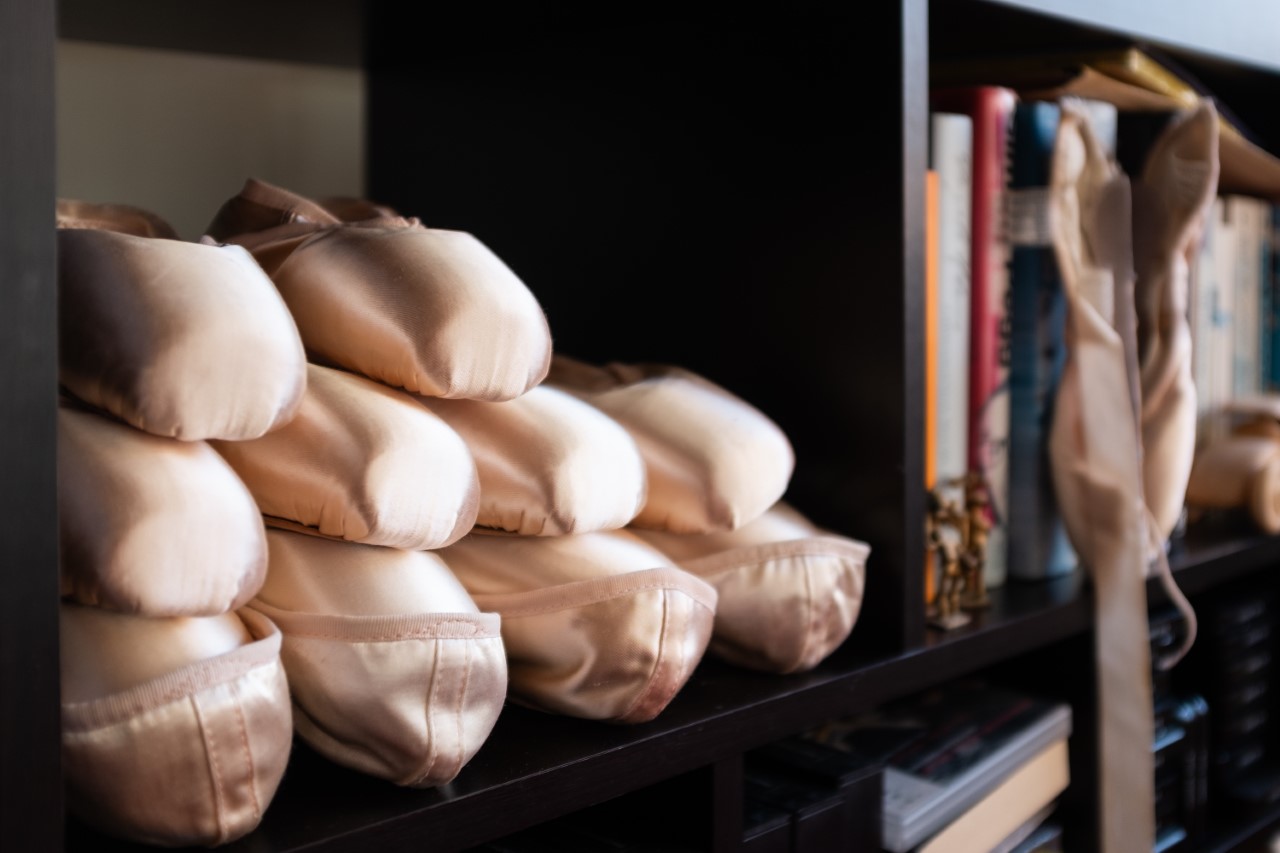Everything you Need to Know About Pointe Shoes
A brief history of the pointe shoe
In the ballets first performed in the 15th century Renaissance courts, dancers wore heeled shoes, in line with the era’s aesthetic. Things started to change in the 1730s, when Paris Opera Ballet dancer Marie Camargo removed the heels from her shoes, creating the Ballet Slipper: a shoe that expanded the possible movement vocabulary by allowing dancers to execute leaps and fast jumps. Later that century, another landmark moment paved the way towards dancing on pointe. Dancer-turned-choreographer Charles Didelot invented a cable rigging that allowed dancers to “fly” onstage. The technology lifted the dancers up onto their toes before they appeared to float across the floor, introducing the idea of weightlessness in ballet.
The first time we saw pointe work on stage was in 1823 when Italian ballerina Amalia Brugnoli rose to the tops of her toes while performing La Fée et le Chevalier. Although showing visible effort to get on pointe, Brugnoli inspired other dancers to practice and refine the technique. One decade later, Marie Taglioni was the first dancer to perform a full-length ballet on pointe in La Sylphide, using the technique to help portray the ethereal character and emotion of the piece.
The use of pointe shoes continued throughout the Romantic ballets of the early to mid 19th century, in order to distinguish mortals from supernatural, sylph like characters. At the same time, Italian shoemakers toughened pointe shoes allowing ballerinas to perform sustained balances and pirouettes, and prominent choreographers like Marius Petipa incorporated more pointework into their works. The modern pointe shoe only started to emerge when famous prima ballerina Anna Pavlova added leather soles inside her shoes and hardened the toe box for better stability. Her ingenious redesign was revolutionary and helped shoemakers update pointe shoes for the modern era.
5 facts about pointe shoes
1. Anatomy of ballet pointe shoes
Perfecting pointework is no easy task. That is why pointe shoes have been redesigned over the years to improve performance and comfort, using materials such as fabric, paper, cardboard, leather, cotton and satin. Modern pointe shoes comprise the following elements:
- Platform: the edge of the pointe shoe that allows dancers to stand on pointe and balance on their toes – this is only a few millimetres thick
- Box: sustaining and securing the toes when executing pointework.
- Vamp: the covering for the top of the foot and the metatarsals, or the small bones in the foot. Its size and shape is chosen depending on foot shape, toe length and technique through demi-pointe (when the dancer has their full body weight on the balls of the feet).
- Shank: the insole of the pointe shoe, commonly altered by professional dancers to achieve extra flexibility in the shoe.
- Outer sole: the external part of the shoe in contact with the floor when dancers stand in a flat position.
- Wings: the symmetrical sides of the vamp, directed toward the heel.
- Ribbons: the way of securing the shoe to the foot, tied around the ankle.
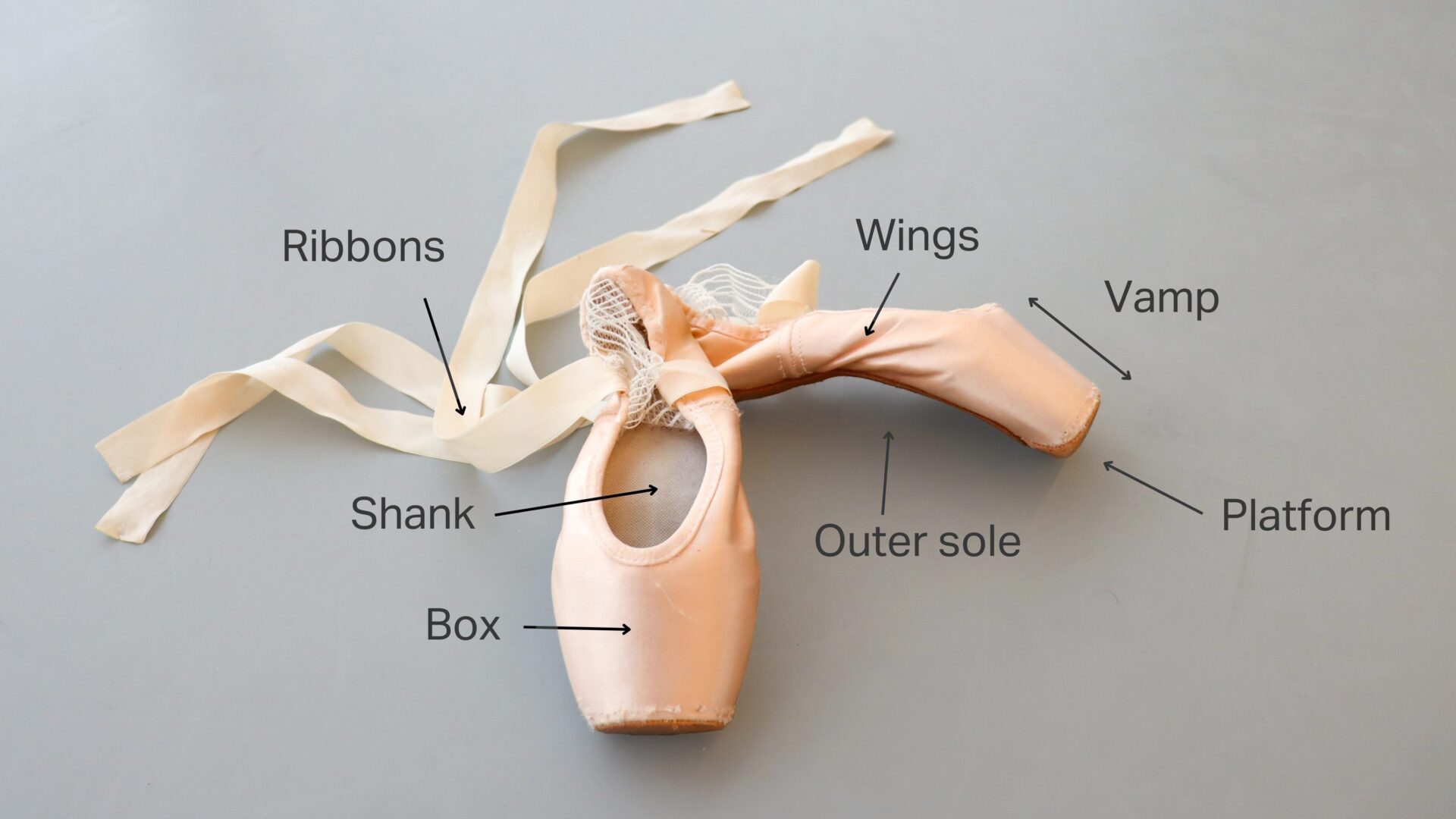
2. They are handmade and customised
Following Pavlova’s pointe shoe innovations, manufacturers have continued to revisit shoe designs to adapt to ever-changing choreographic demands. One thing has not changed though: pointe shoes are still handmade.
Professional ballerinas liaise directly with makers to find their perfect shoe, depending on their foot shape and size. They also need to consider what roles or choreography they will perform, varying between soft or hard pointe shoes. Once a dancer has found the perfect shoe, they often have their own way of customising these before use. This might include hitting or standing on the toe box to soften this area for extra comfort as well as attaching elastics and ribbons, placing them wherever suits them best.
Curious to discover how a dancer prepares her pointe shoes?
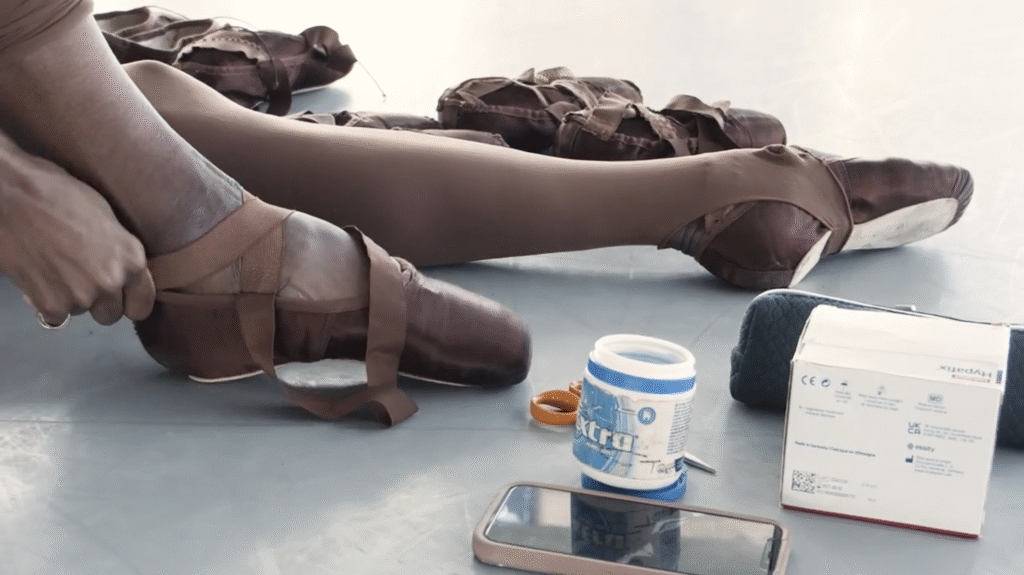
3. Practice makes perfect
Dancers often cherish the moment they get their first pair of pointe shoes. For many, this is a rite of passage that symbolises their hard work and years of intensive training. Dancers only start pointework once they have developed enough strength, control and understanding of classical ballet technique, making this moment an exciting milestone in their dance journey.
Pointework can be as challenging as it is beautiful. Throughout their professional careers, ballerinas continuously work on their strength and technique en pointe: it is a constant process to perform at their best and prevent injuries. Some of the typical exercises used to strengthen the foot and ankle include rises, balances, tendus and working with resistance bands.
I love pointe shoes so much, I think it’s part of why I became a ballet dancer. They open up the possibilities for what a dancer can do – Precious Adams, English National Ballet Soloist
First Artist Julia Conway and Soloist Precious Adams share their favourite pointe shoe memories in this video:
4. Breaking barriers
In the early 1970s, Dance Theatre of Harlem revolutionised classical ballet when they began to customise tights, pointe shoes and ribbons in shades of brown to match the dancers’ skin tones. Five decades later, brands now manufacture pointe shoes in various shades, making ballet pointe shoes more accessible to all.
The last few decades have also seen more ballet companies pushing the boundaries of gender stereotypes, supporting more male dancers to dance on pointe, showcasing their bravura through pointework or wearing pointe shoes to work on their strength.
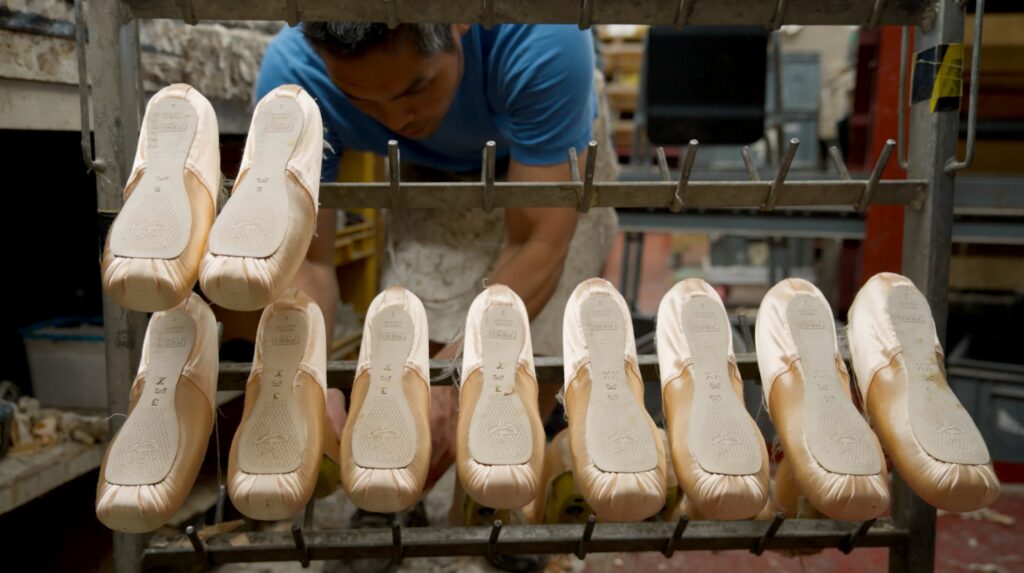
5. Giving pointe shoes a second life
Nowadays, sustainability is also a critical topic for the ballet world. Due to the short life span of pointe shoes, ballet companies hold thousands of used pairs per year, and most of them end up in waste, as there is still no mainstream process to recycle them. Nonetheless, new environmental-friendly actions are successfully helping to address pointe shoe waste.
The Drop-Off Pointe is an initiative led by English National Ballet dancers to recycle and repurpose the company’s used pointe shoes. Some of the collected pairs go to textile recycling companies, while others get a new life reworked by visual artists.
Sustainable solutions like the Drop-Off Pointe give pointe shoes a second life and allow ballerinas to positively contribute to environmental sustainability while dancing on pointe! – Ashley Coupal, Artist of the Company
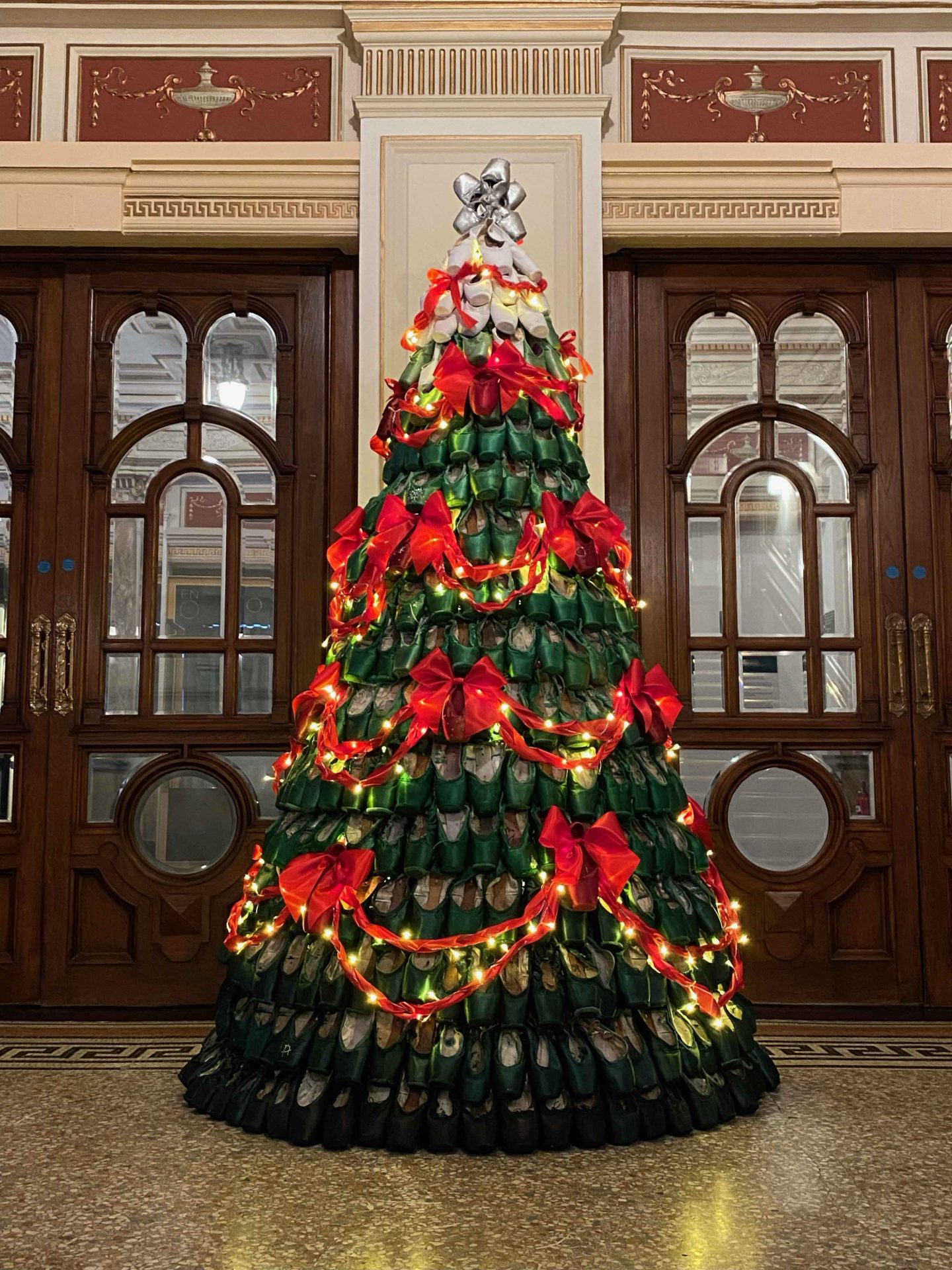
English National Ballet’s annual pointe shoe tree at the London Coliseum is an example of our used pointe shoes getting a new life.
Exploring ways to make shoes last longer is another important environmental initiative.
Dancers can improve the pointe shoe life cycle by trying to extend their lifespan through proper care, repairs, and using products like shellac to harden the shoe and wear it for a long time. We also try to reuse elastics and ribbons from old pairs. Additionally, exploring eco-friendly alternatives could be beneficial for the environment. – Francesca Velicu, Junior Soloist
It is impossible to imagine ballet without its landmark pointe shoes. In order to allow our dancers to perform their best, English National Ballet provides at least ten pairs of new pointe shoes a month for each dancer. You can donate to support our dancers to keep their pointe shoe work through our Pointe Shoe Appeal.
